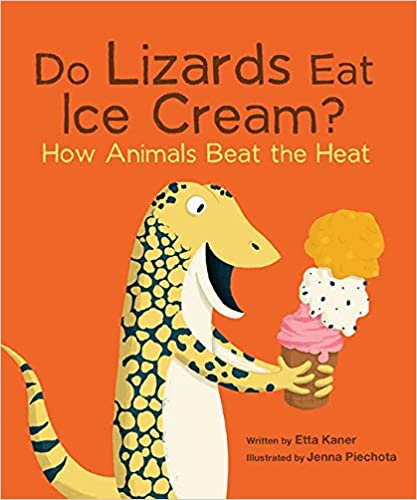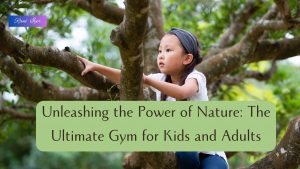One sure way to get #children read a #book over and over again, make it a book a favorite book is to add a touch of humor. Etta Kaner has mastered the way to bring #science, #humor, and story telling together in her series of books. Reading her books not only keeps the reader chuckling, but also lapping up her #intimate #knowledge about creatures that she generously shares with her readers.
Etta is a wonderful, responsive author who loves to hear from her readers. When I contacted her for the interview she quickly took time to talk to her readers. As you read the interview, you will see the wonderful ways she stays connected with nature. Hope the interview #inspires you to read her book and find a way to stay connected with nature. Immersion in nature is critical for psychological, and mental well being of individuals on #earth. Read more about the benefits of nature walk.
Please do read her #books and write to her soon. #Share #like #comment on this blog post.

Do Lizards Eat Ice cream? How Animals Beat the Heat by Etta Kaner
1. Almost all your publications are lovely books relating to nature. Please share with our readers how you became interested in writing about nature and creatures.
I’ve always had a love of nature. Perhaps it stems from my childhood when my parents and I would rent a cottage in Muskoka (two hours drive north of Toronto) during the summer. This tradition continued as my own children grew up. My love of nature is reinforced by long walks exploring forests, ravines, and ponds and tending my large flower and vegetable garden, which luckily is surrounded by neighboring trees. I’m always in awe of how such tiny seeds can produce such a variety of beautiful plants.
2. In the book: Do Lizards Eat Ice cream? How Animals Beat the Heat, you have a wonderful voice and a set of quirky questions that will capture the imagination of the readers. Can you please share your process for developing the engaging, quirky questions?
In the cases where an animal’s behavior was similar to a human’s behavior, e.g., “Do frogs use sunscreen?” it was pretty straightforward to come up with a question. But when the behavior was very different than a human’s, I tried to think of a question to which kids could relate, e.g., running through a sprinkler, or tried to imagine a scene that would be a little bizarre and humorous, like the alligators wearing shades and playing in a band.
3. The title Do Lizards Eat Ice cream? How Animals Beat the Heat is a part of a series of non-fiction books on creatures handling seasonal climate and behavior. What is your process for picking up themes that have big ideas that have series potential while providing a new angle to themes that have already been discussed?
Actually, “Do Lizards Eat Ice Cream?” just naturally followed “Do Frogs Drink Hot Chocolate? How Animals Keep Warm” and is really a sequel rather than part of a series. In the past, I used to think of a series when I was developing a book idea as you can see from my website, but I haven’t done that for a while. Some topics just lend themselves naturally to a series like my “Exploring the Elements Series,” which covers the sun, rain, snow, and wind.
4. Please share your research process for writing a series of books.
I use numerous resources when researching an aspect or even one fact about an animal or a plant to make sure that it’s accurate. I read books and online scientific research papers, and I look at the sites of reputable science organizations like the Cornell Lab of Ornithology or Ask Nature or the Animal Diversity Web. My favorite method of research is interacting through email, by phone, or sometimes in person with scientists who are experts on a particular aspect of an animal or plant. Most are very generous with their time and are excited to contribute to a book that is going to be read by young people.
5. Several Science teachers and home schoolers read this blog post. What are some unusual ways they can use science in this book outside of their classroom?
This is a book about animal adaptations for the purpose of survival. I would suggest taking children outside to observe the behavior of animals and discuss why they are behaving in a given way. Why is that squirrel chattering loudly while flicking its tail? Why is that cardinal sunning itself with its wings spread out? Why are those sparrows taking dust baths? What are those ants doing? Which way is the wind blowing? Encourage children to make observations (What do you notice?) and to ask their own questions about a given aspect of nature. Turn on their curiosity and get them away from being passive recipients of information.
During this Covid-19 time, outdoor class activities can be challenging. Teachers might want to refer to a helpful website: https://www.findingnature.org/resources to help them with their planning.
6. How can teachers and environmental educators use this book in their lessons?
This book can easily be used as a springboard for further research about how other animals keep cool. Children can create a similar text with these new animals. Children can also create a made-up animal and add several of the features found in my book. For example, their made-up animal could have slits for pupils like alligators, a bushy tail like the cape ground squirrel as well as white chest feathers like the herring gull. Most importantly, children should be encouraged to ask questions about what they see in the book. Perhaps some of their classmates might be able to answer them, or they might have to do some research. What’s important is to develop their skills of observation as well as their ability to question.
7.Can you share some ideas for families to connect more with nature?
Go outside! Go for walks. Go for #hikes. And parents, leave your device at home! You don’t have to go to elaborate lengths to appreciate nature and develop curiosity and a sense of wonder. Even an area of #grass delineated by a hoola hoop and explored with a simple magnifying glass can yield interesting results. Encourage your children to notice the #behavior of #squirrels, #birds, and other #wildlife during a walk. If you’re lucky enough to have a garden, get your kids to help care for it – watering, planting, weeding, digging, deadheading, collecting #veggies. Put a #birdbath out in the garden. You can make a simple one using a very large flower pot as a base and put the matching saucer on top to hold the water. You would be amazed at what comes to drink or bathe in your birdbath in addition to birds. Did you know that #robins like to hog the bath for themselves, thus creating a line-up for its use?! Teach your kids to recognize and make bird calls. Find #ants, #bugs, #spiders, #snails, and #worms by doing some digging and observe their behavior. Examine dead #trees. Catch #tadpoles and keep them in an #aquarium until they mature. The possibilities are endless!
8. Based on their love for animals, what steps can our young readers take to help creatures in summer and winter?
In summer, your kids can plant and #care for flowers that will attract birds, bees, butterflies, and other #insects. The kinds of flowers you plant will depend on where you live. Even if you don’t have a garden, you can plant them in pots on your balcony. Not only will these provide nectar during the warmer months, but many will provide seeds during winter and nesting material in the spring. During the #summer, you can set up a birdbath, which should be refreshed daily. During winter, you can set up a bird feeder that is safe from squirrels and cats.
Readers are welcome to visit my website: http://ettakaner.com/ to read a few of the spreads from “Do Lizards Eat Ice Cream?” as well as to read about my other nature-based books.


